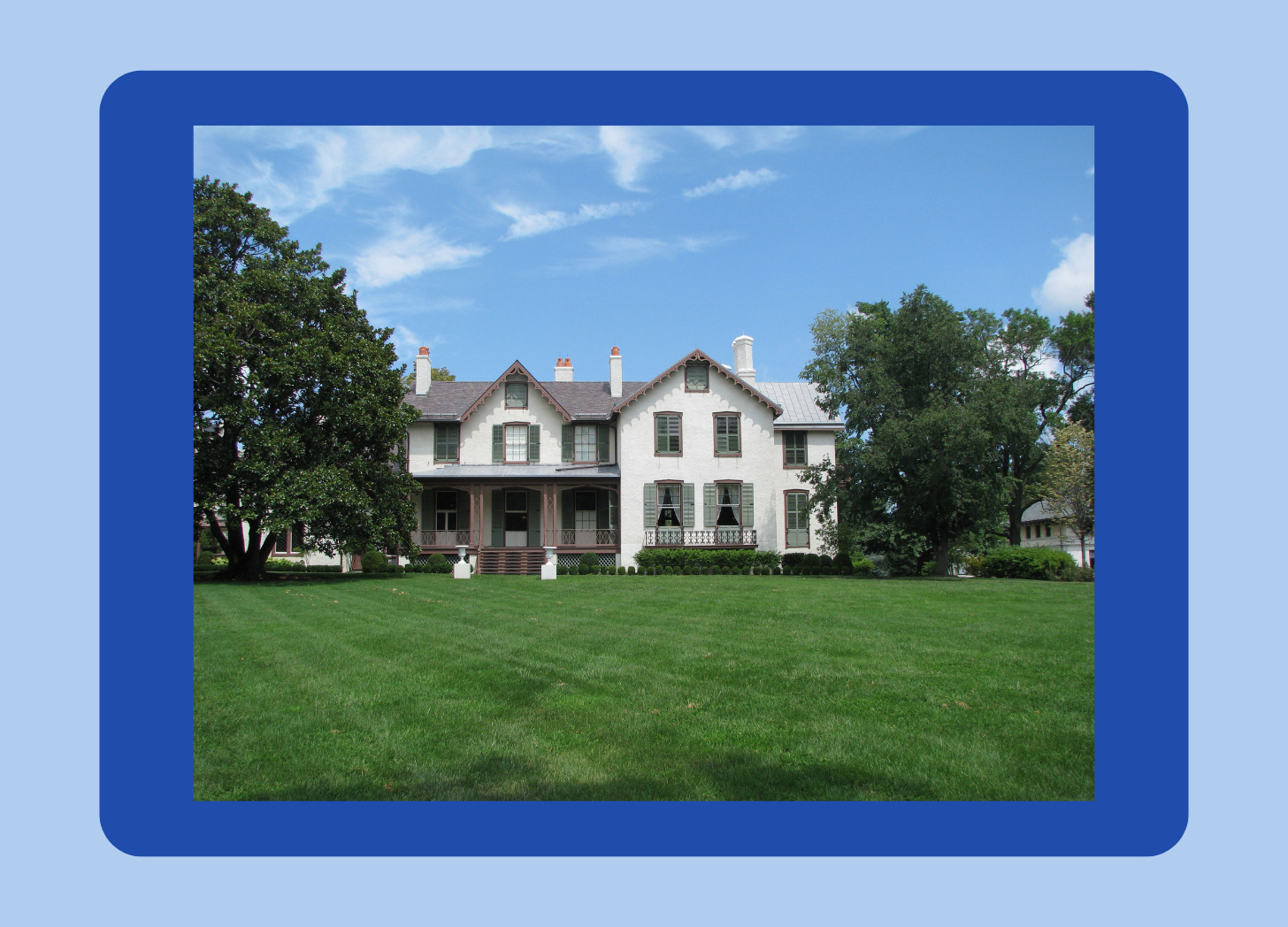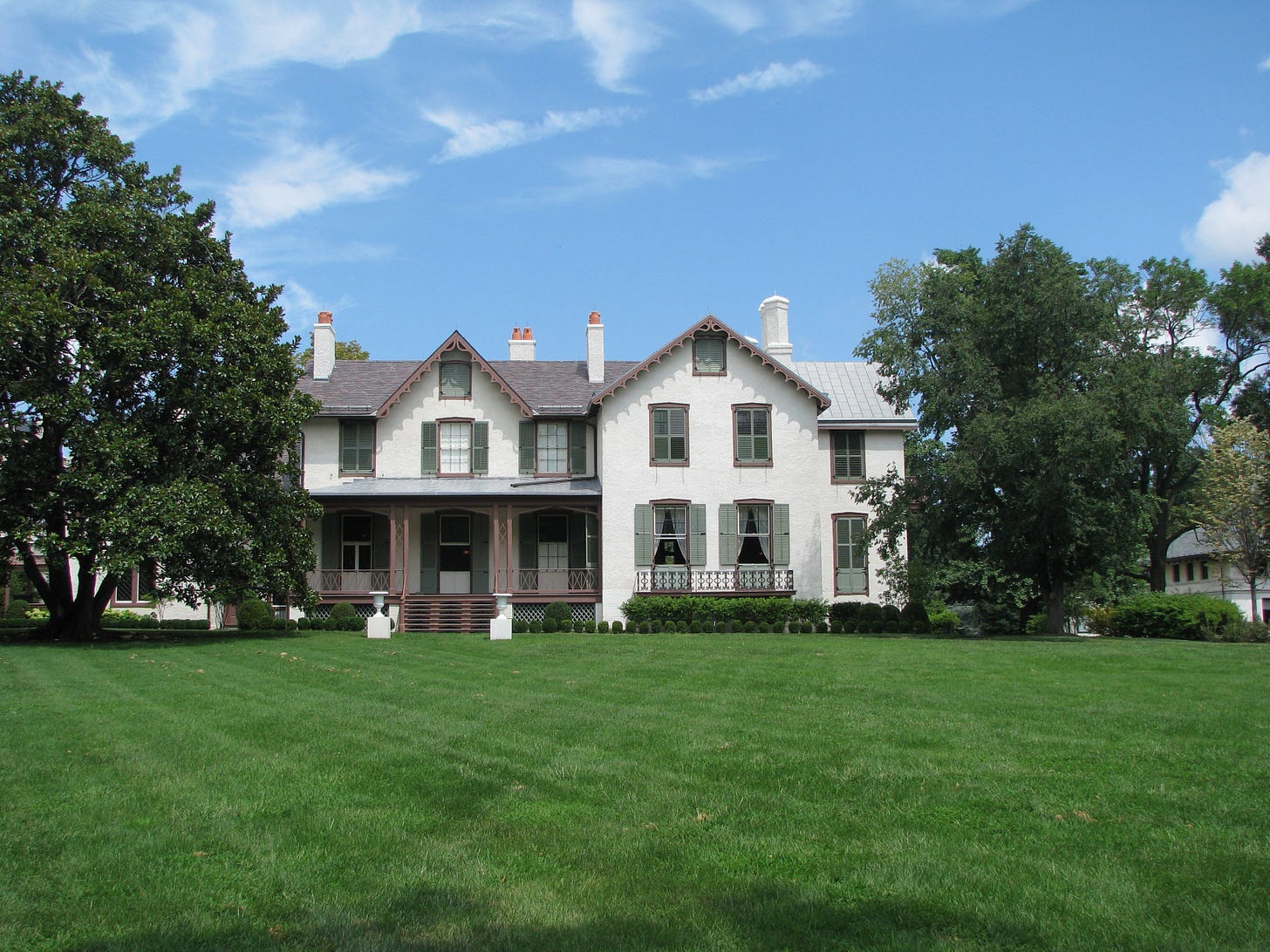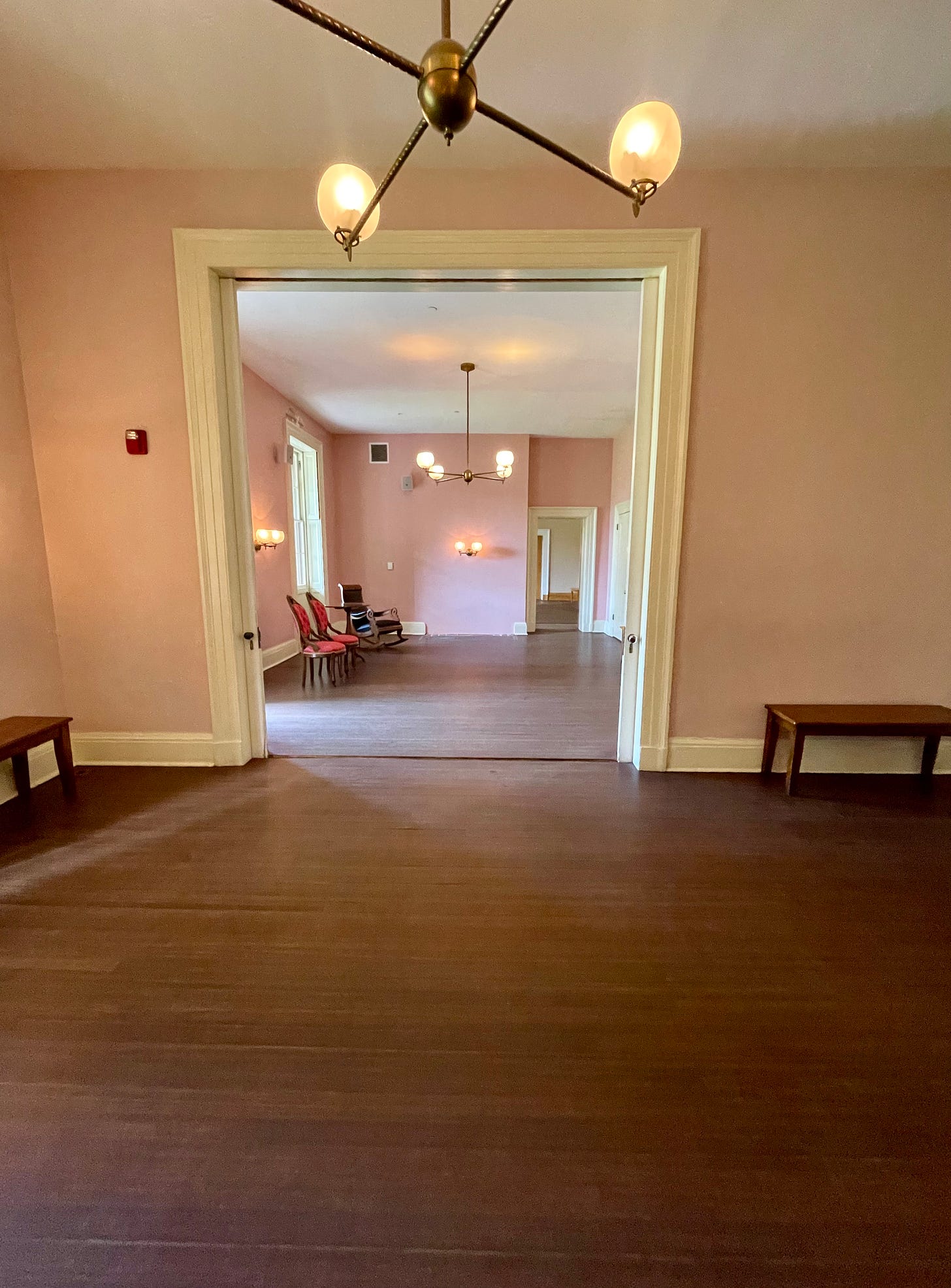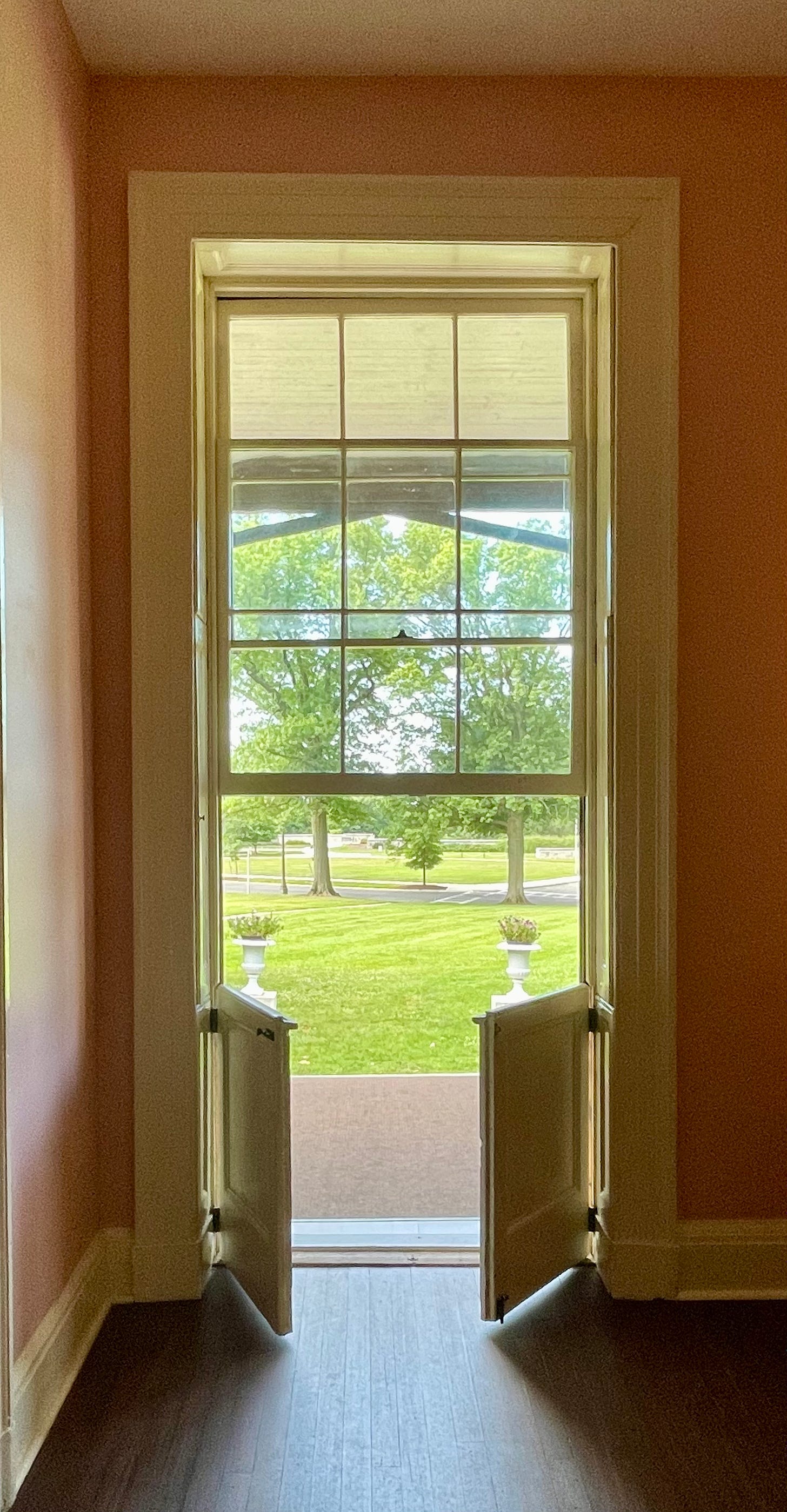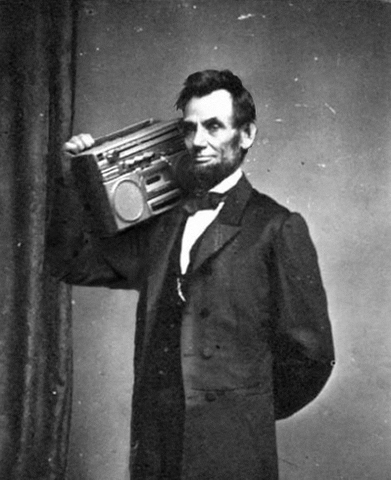How a Museum Without Artifacts Tells the Story of Abraham Lincoln's Summers
An Inside Look at President Lincoln’s Cottage with Museum Anthropologist Haley Bryant
This is a free post for subscribers of Landline, a pop culture and history newsletter for people who care about the Titanic, and the the Kate Winslet vehicle of the same name. Consider subscribing to the paid plan to get my weekly email of recommendations and links, a podcast episode, and more! You can also help me spread the word by sharing it with a friend who would love it.
Collecting Stories is a feature of Landline that invites guests to share meaningful objects from their lives or work and tell the stories behind them.
I love getting to feature people working at cool organizations here. Haley Bryant came into my life via a mutual friend, and I was elated to learn she works at one of my favorite museums (President Lincoln’s Cottage). As a museum anthropologist, (a very cool job), I’m so happy she had time to share a bit about her work at a house “furnished with stories, instead of stuff.” Read on to learn how to take an empty building and create a vibrant house museum, how to question whether Lincoln was gay, and take in some truly hot (but correct) takes on Mary Todd Lincoln.
Name: Haley Bryant
Position: Programs Assistant
Institution: President Lincoln’s Cottage (PLC)
How did you get into your current role? What drew you to this work?
Finding my way to my current role was simultaneously a complete accident, the product of decades of working very hard to end up where I am, and kismet.
I’ve been in the museum field for over a decade - and have aspired to be a museum person for as long as I can remember - but neither my experience, education, nor training focused on historic houses or the discipline of history in general. I’m a museum anthropologist, and the bulk of my professional experience has involved working with (and primarily digitizing) ethnographic and cultural collections. It has also involved a lot of community collaboration, primarily with Native American and First Nations groups who (because of centuries of extractive colonialism and cultural genocide) rely on museums as repositories of their heritage. PLC is a far cry from all of that, not least because we don’t really have a collection to speak of. We do have some ‘stuff’, but as I’ll explain, none of it is on view and it’s hardly ever brought out to interact with the public.
In addition to working at PLC, I’m writing up my dissertation for my PhD in Information Studies at the University of Toronto. When I moved back to D.C. to finish my diss remotely in February of 2023, I was told in no uncertain terms that I could no longer work for the university even if I was still enrolled (so, no Teaching or Research Assistantships that I had previously relied on to pay my rent). I began casting about for a part-time gig in the area that would supplement my meager student stipend, and as museums are almost constantly hiring for front-line workers that’s where I started to look. I started at PLC as what they call a “Museum Program Associate” - these are the folks who give tours on a daily basis, lead school programs, etc.
If I’m honest, I fell in love with PLC probably halfway through my interview. It was immediately clear to me that this very small, but astoundingly dedicated team of people were already doing the kind of work that I aspire to do as a museum professional: ethical, thoughtful, people and community-oriented, risky and novel (relative to typical museum work). That first impression was affirmed time and again during the eight months I worked as a Museum Program Associate, so as soon as a full-time position opened in the Programs Department I didn’t hesitate to put in an application.
Two things in particular made me a PLC devotee for life (employee or otherwise). Over the winter of 2023-24, we hosted a groundbreaking exhibit called Prison Reimagined: Presidential Portraits Project. The brief was for artists to create portraits of American presidents that reference their record on incarceration. This exhibit, co-organized with a team from Justice Arts Coalition, was entirely imagined and curated by a team of incarcerated men at Nash Correctional Institute in North Carolina. The lead curator, a brilliant guy named Caddell (Monty) Kivett, solicited and juried works from correctional institutes (mostly) around the Southeast. As a part of the interpretive process for this exhibit, the front-line staff were set up to talk with members of the organizing committee and the artists at Nash through an app called “Getting Out” that people use to talk to their incarcerated friends and loved ones. This allowed us to actually get to know these guys and learn about their artistic practice and the purpose of their pieces in the show, just like we would have if the artists were able to be on site and talk with us.
I’ve never experienced something like that working in museum education and outreach—every single person on staff went into the exhibit and these relationships with the artists and committee with full enthusiasm and zero hesitation. The artists were all compensated for their work, just as they would have been had they not been incarcerated. Monty and the organizing committee maintained full ownership of the project at every point. Furthermore, we screened the documentary “First Step” about the First Step Act, and hosted conversations with the Marshall Project and activists fighting for an end to the death penalty. I believe that good museum work strives to be empathetic and liberatory, and that’s exactly what this was.
The second moment that I knew this is my place and these are my people is when, in September of 2023, we voted unanimously to become the first museum in Washington D.C. to unionize (UAW local 863! Like…1863…the year the Emancipation Proclamation went into effect…). There’s been nothing but support and enthusiasm from leadership as we negotiate our first contract. It feels like PLC is a place where the staff truly walk the walk.
What’s your favorite object(s) in the collection?
As I mentioned, PLC doesn’t really have a collection. Technically we do, there’s a room that we call “collections” and there are things in there that have been cataloged, but the collection isn’t the heart, or really any other mildly vital organ, of the place.
Not only do we not really have a collection, but unlike the vast majority of historic houses, the Cottage is unfurnished. No velvet ropes keeping visitors back from staged kitchen or bedroom scenes, no portraits of somber old men on the walls, etc. We have a handful of period-accurate chairs, but that’s more for effect than anything. To explain why, I need to give some background on this place.
Despite the name, Abraham Lincoln never owned the Cottage. It was built in 1842 by local Wealthy Man™, George Washington Riggs. Riggs sold the house and 250 acres of his property to the federal government in 1851, who purchased it with the intent to use it to establish the country’s first retirement home (for military personnel). In the 1850s it was called the Military Asylum, for most of its history it was the Old Soldier’s Home, and today it’s the Armed Forces Retirement Home. There are still vets from all branches of the military who live on site.
Lincoln ended up here in 1861 (just days after his first inauguration) because the home had a tradition of inviting sitting presidents to use the Cottage as a guest residence. That, compounded by the fact that the house is at a higher elevation than downtown D.C. (less heat and humidity, much less typhoid), encouraged Lincoln and his wife, Mary, to use the Cottage as their summer residence. They spent the summers of 1862, ‘63, and ‘64 here - a quarter of his presidency. (There’s a lot more to this story, of course, but I have to withhold something to tempt you to come on a tour!)
When the Lincoln family made the move up to the Cottage each spring, they had to bring all of their furnishings from the White House, which meant they had to take everything back with them at the end of the season. The big reason the house is unfurnished now is because we literally don’t have anything from Lincoln's stay to use. There are also no photographs of the interior of the Cottage from that time, so if we did try and furnish the place it would all be conjecture.
Before the Cottage opened to the public in 2008 the staff decided that the house would be furnished with stories, instead of stuff.
There are certainly visitors who are supremely disappointed that the house isn’t furnished. Some people just want to look at old stuff! I am one of them! But I feel very strongly that what our visitors experience here is more impactful and more important.
I hope to convince you of this by sharing one of my favorite ‘items in the collection’ - a window. Or, to be more accurate, a jib door.
What is it?
A jib door is a door that is flush-mounted to the wall, typically with no visible hardware - think secret bookcase door that opens onto a hidden lair. Our jib door is designed to look like all the other windows in the cottage, and though it does have some visible latches on the interior, from the outside you’d never know it was a door. People assume the south side of the house is the “front” because of the wide veranda and sweeping view of downtown D.C. and Northern Virginia, but we know that it wasn’t because the jib door is the only way to get inside the Cottage from the South elevation! If you wanted to bother your president at his summer home, which plenty of people did, you’d have to go around the house to the (beautifully restored, natch) front door and vestibule.
When I lead a tour, I ask one of the visitors if they’d like to open up the door so we can step out on the back veranda, because a) cool old door! and b) it allows the visitor to step into Lincoln’s shoes as they open the exact same door he would have opened when he went out onto the veranda in the evening for a game of checkers.
What story does it tell?
Metaphorically speaking, I see the opening of the jib door as the opening to the tour that I give, the theme of which is Lincoln as Communicator. When we step out on the veranda through the jib door, we talk about the company of soldiers - the Bucktails, from Pennsylvania - who served as Lincoln’s personal guard who made their camp on the Cottage’s south lawn whenever the First Family was in residence. According to their letters and diaries, Lincoln often strolled into their camp to share a plate of beans and chit-chat with the soldiers. I love that image. I ask visitors to imagine what sorts of things they talked about - many assume the war, but I think Lincoln was mostly just shooting the breeze, asking about families and interests. The man liked to talk, we know that about him!
Why is this item so meaningful to you?
I love the jib door for all of its idiomatic implications - when one door closes open a window, a window on the world, window of opportunity - because that aligns so closely with Lincoln’s experience as the leader of the country during the Civil War, and our interpretive ethos at PLC. Just as we can guess at what the furnishings looked like in the Cottage in the 1860s, there is so much that is said about Abraham Lincoln as if it were fact, when in reality it is (sometimes careful, sometimes less-so) inference based on historical sources. As one journalist put it after Lincoln’s funeral, “it will be impossible hereafter to speak the truth of Abraham Lincoln. He will be mythologized, and we won't really get to know the inner man.”
We try to invite our visitors to broaden their thinking about this period in history, to examine preconceived notions about Abraham Lincoln, the war, and enslavement; and to leave with a spirit of curiosity more so than a litany of dates and battle sites. The most blatant way we do this is by engaging our visitors in a discussion about how the Emancipation Proclamation, contrary to popular belief, did not end slavery. At all, in any way.
Through our tours, and especially through other interpretive tools we use like our podcast Q & Abe, we encourage visitors to explore questions that might never have occurred to them before, my favorite of which is “Was Abraham Lincoln gay?” - this is a question we get from (especially younger) visitors not infrequently. People ask for all kinds of reasons, sometimes they want to find a little bit of Lincoln’s story that might relate to their own, sometimes they’ve heard a salacious rumor and want confirmation. Sometimes they want us to say no, absolutely not.
What we say instead is, “maybe!”
My colleague, Joan Cummins, has done some incredible work incorporating the idea of Queer Possibility into our interpretation at PLC. They borrow the notion from queer museums scholar, Margaret Middleton, who defines it as “an interpretive strategy that uplifts the marginalized narratives of LGBTQ (Lesbian, Gay, Bisexual, Transgender, Queer) historical figures and objects of queer significance.” They emphasize that it is not a neutral action when sites choose not to interpret the queerness, or potential queerness, of their subjects. What resonates most with us about Queer Possibility is that at the end of the day, it’s really a practice of allowing yourself, your organization, and your visitors to ask, “what if?”. It isn’t an attempt to come to a concrete conclusion about Abraham Lincoln’s sexuality or gender - and in fact, there is no way we will ever know about Abe’s bedroom practices. Further to the point, Middleton does a very good job of emphasizing that who one has sexual relations with - if one does at all - is not the single, defining factor of one’s sexuality.
What we do want to do, though, is to tell visitors about the documented, intimate, lifelong relationship between Lincoln and his first business partner, Joshua Speed. Not only did they share a bed above Speed’s shop in Springfield, Illinois for four years, but responding to a letter Speed sent recounting his first night as a married man, Lincoln relayed that, “I opened the letter with intense anxiety and trepidation so much that although it turned out better than I expected, I have hardly yet at the distance of 10 hours become calm.” I mean, the man spent ten sleepless hours panicking about whether his best friend made it out of his wedding night unscathed. Scholars suggest this also might reflect some of Abe’s anxieties about his own impending marriage to Mary Todd.
We also want to introduce visitors to Captain David Derrickson, the leader of the Bucktails. He took the role as Lincoln’s personal bodyguard, and was noted by other soldiers living on the grounds to have shared the president’s bed whenever Mary was away (which she was frequently).
Does any of this mean that Lincoln was gay? No. Not only is none of that conclusive evidence, but ideas and experiences of sexuality and gender expression were vastly different in the Victorian period than they are today. Does it invite us to expand our understanding about the intimate relationships Lincoln maintained and expand our understanding of him as an individual who was as enigmatic and multifaceted as any one of us? Yes. As Joan likes to say, isn’t it wonderful to think that there were more people who loved him, instead of fewer?
To clumsily circle back around to the window metaphor, Lincoln scholarship has long been like a house - there are sources, facts, and ideas that are taken for granted as unassailable. The foundation of the house. Centuries of floors and walls, decorative embellishments, furnishings and even inhabitants have been crafted upon that foundation.
Opening a window in that house allows new possibilities to flow in. And if that window is a secret door, maybe we can step through it together.
Is there anything else you’d like to share about your show-and-tell item?
I am compelled to address what is so often the ‘elephant in the room’ with Lincoln, which is his wife, Mary. History (historians?) has not been kind to Mary Lincoln - in fact, it’s been pretty cruel. She’s often reduced to her trauma, labeled as ‘crazy’, and a thorn in Abe’s side. Some people (historians) will argue until they’re blue in the face that Abe hated Mary, that their relationship was terrible, that they never got along. She was a haranguing harridan who spent too much money and was way too concerned about wallpaper.
Unpacking all of that is perhaps the subject of a different discussion, but if we read the historical documentation with as open a mind as possible, a picture emerges of a couple very much in love, who were collectively dealt the worst hand imaginable. As I say on my tours, to lose two of your four children, countless friends and family, and hold a position like the presidency during America’s darkest chapter and still show such tremendous loyalty and care to one another? That doesn’t seem like a couple that hates each other, to me.
Thinking further with Queer Possibility, Lincoln’s love and commitment to his wife didn’t preclude his cultivating intimate, and possibly romantic, relationships with other people. Just as it doesn’t for us today. I think that’s pretty rad.
Where can we learn more about this and its history?
If you’d like to come on a tour of the Cottage, you can find more information on our website.
You can hear the full discussion of Lincoln and Queer Possibility on our podcast, Q & Abe, and from our Director and Associate Director of Learning on the Betwixt the Sheets podcast. You can learn more about the site in general from our Director on the National Treasure Hunt Podcast.
The essential book on the history of Lincoln at the Cottage is Lincoln’s Sanctuary, by historian Matthew Pinsker.
Call Me! (or not!)
I’d love to hear from you! Drop your thoughts in the comments to share with the Landline community, or reply to this email to contact me. You can also find me on Instagram, or email me. I don’t have a dedicated phone line yet (just like in my youth), but maybe someday I’ll achieve Claudia status and get a Landline.
Thanks for reading!
This is a free post for subscribers of Landline. Consider subscribing to the paid plan to get my weekly email of recommendations and links, a podcast episode, and more! You can also help me spread the word by sharing it with a friend who would love it. Thank you for being a friend!





